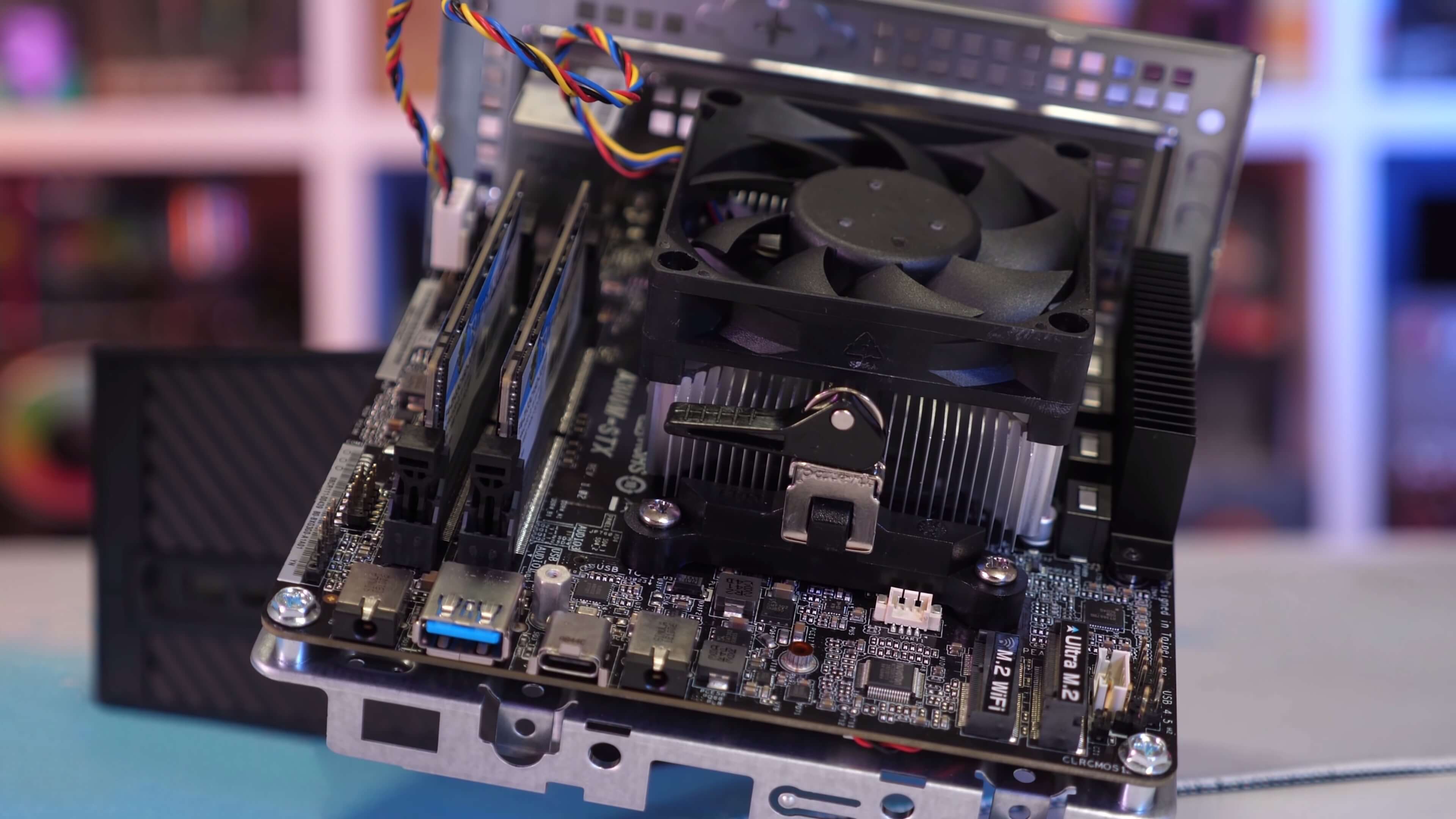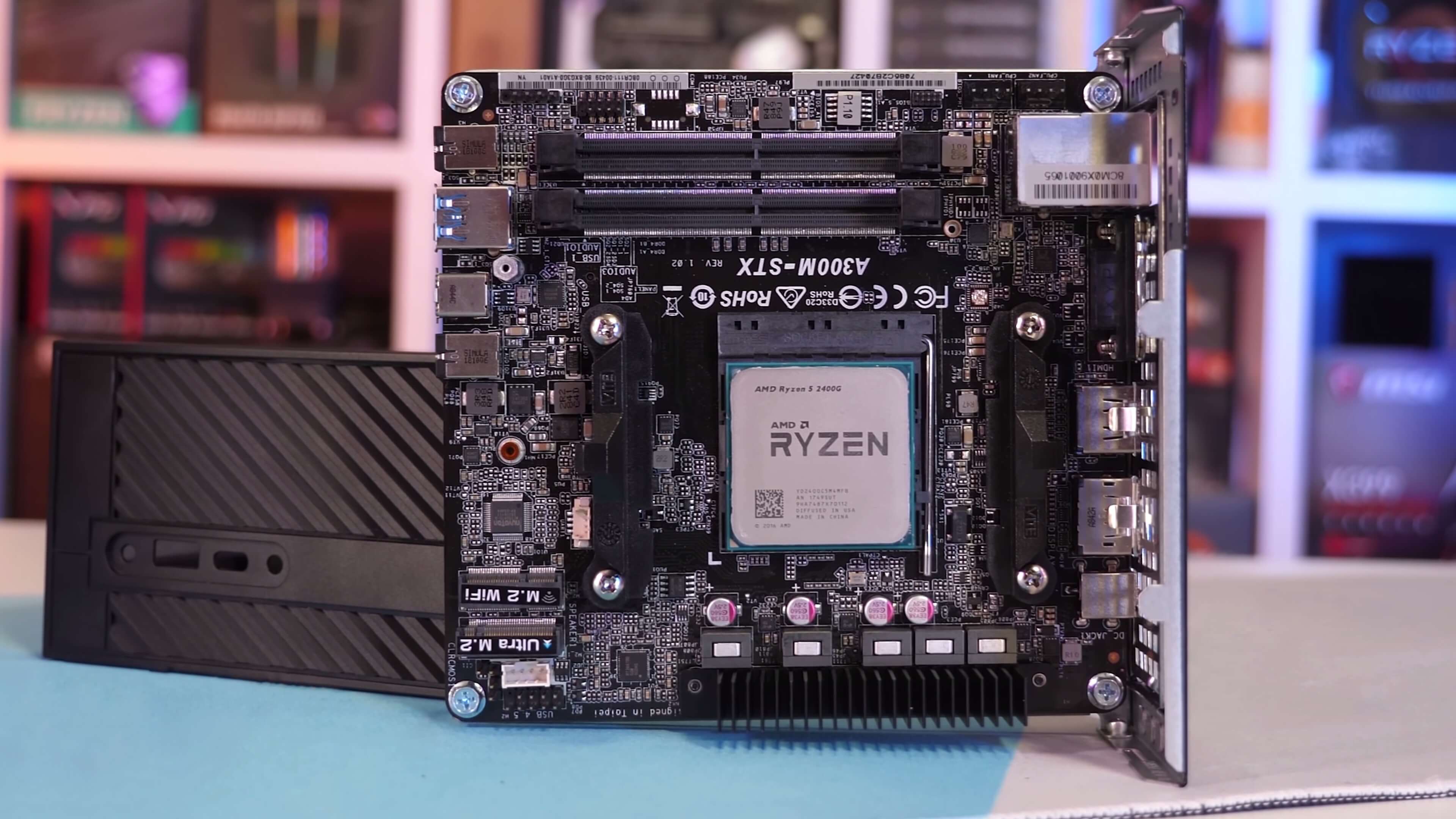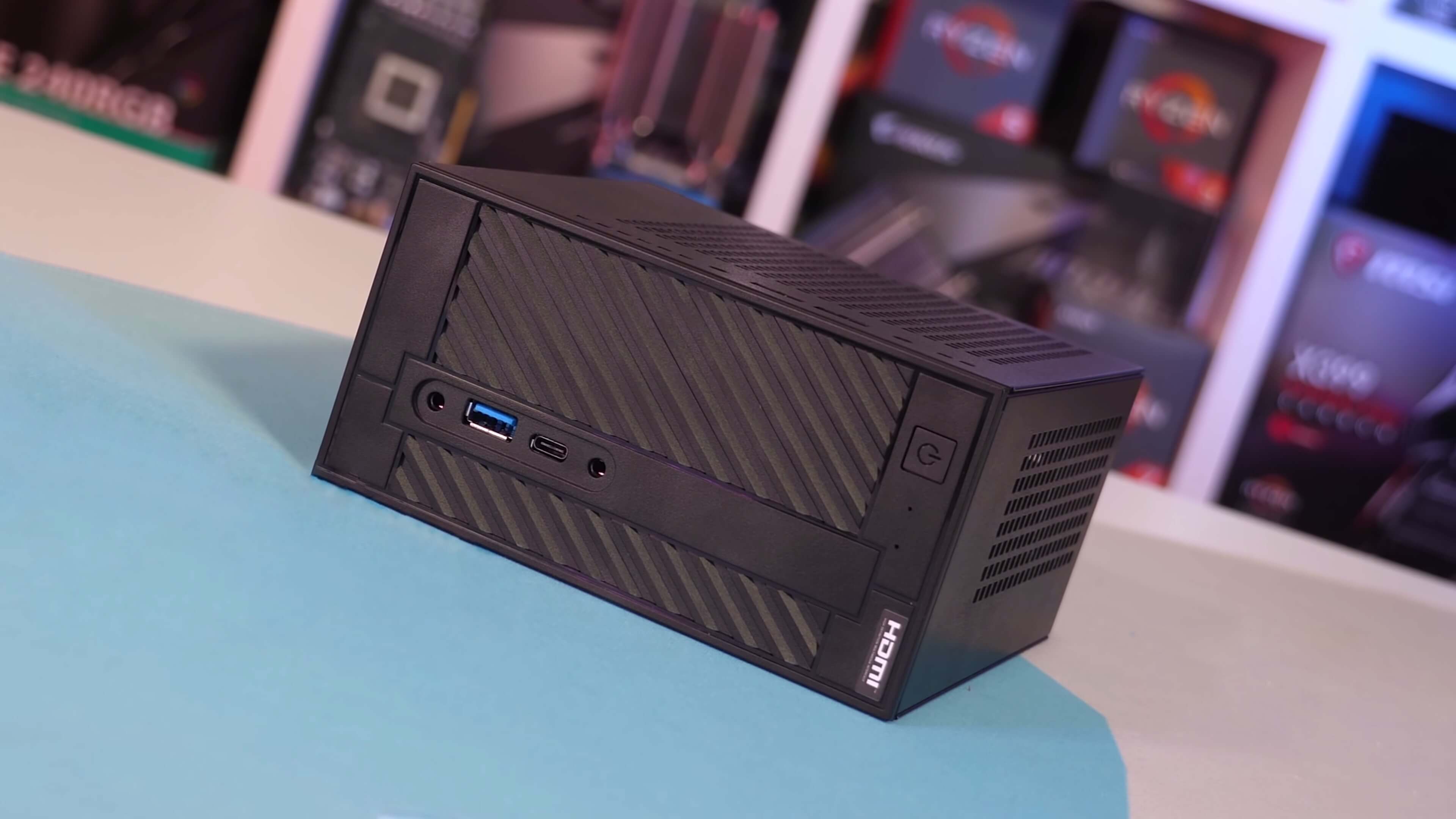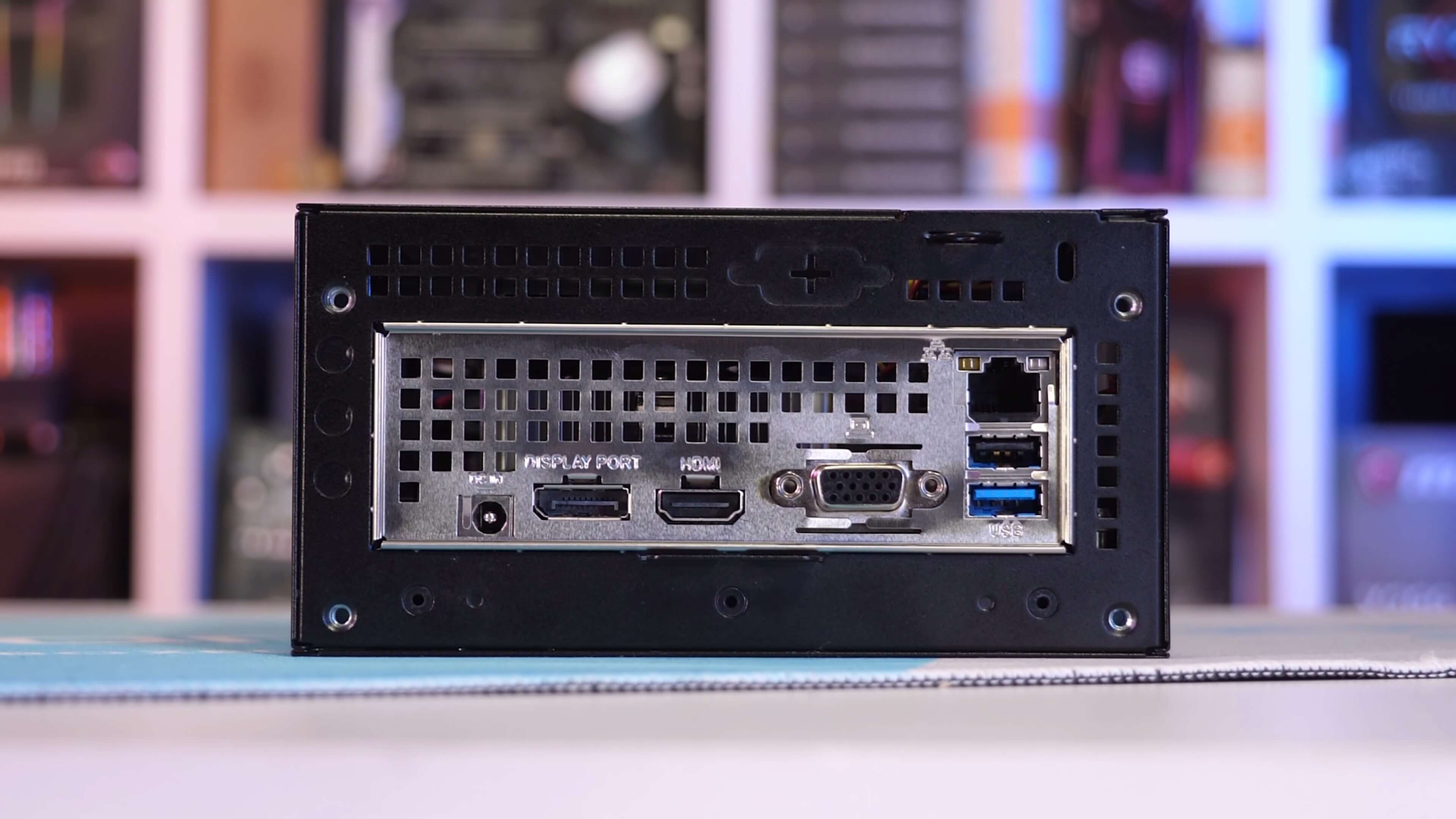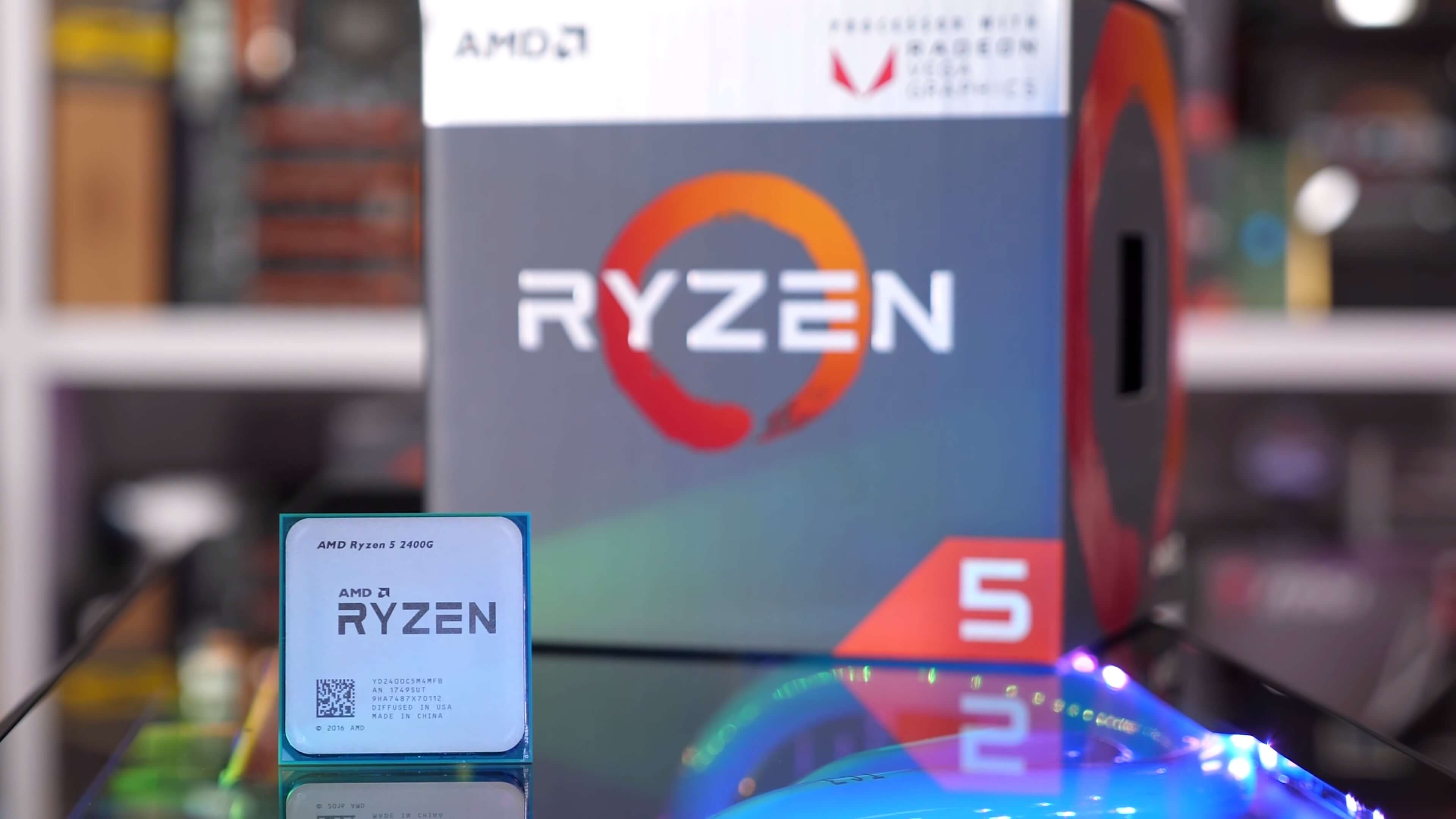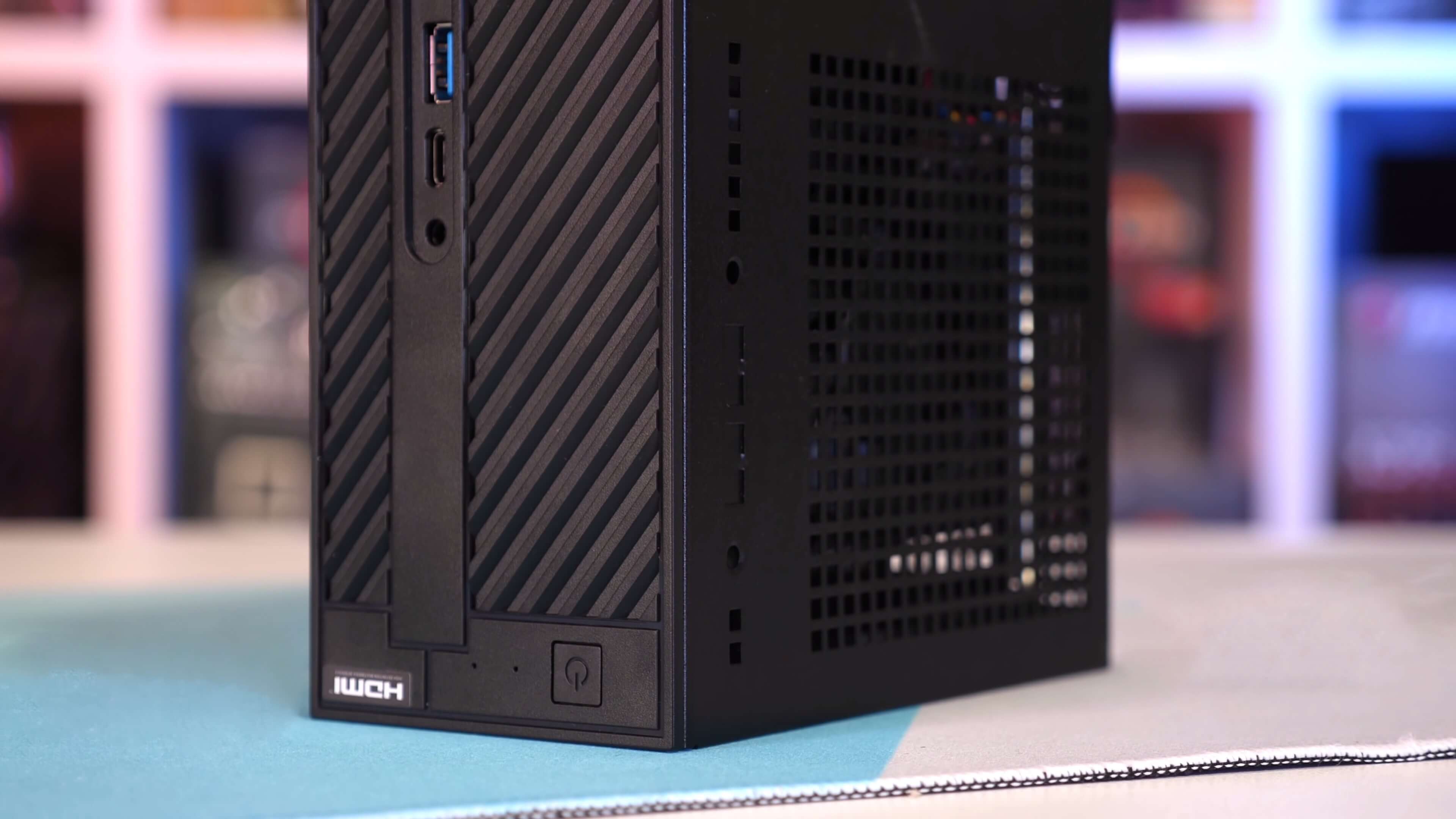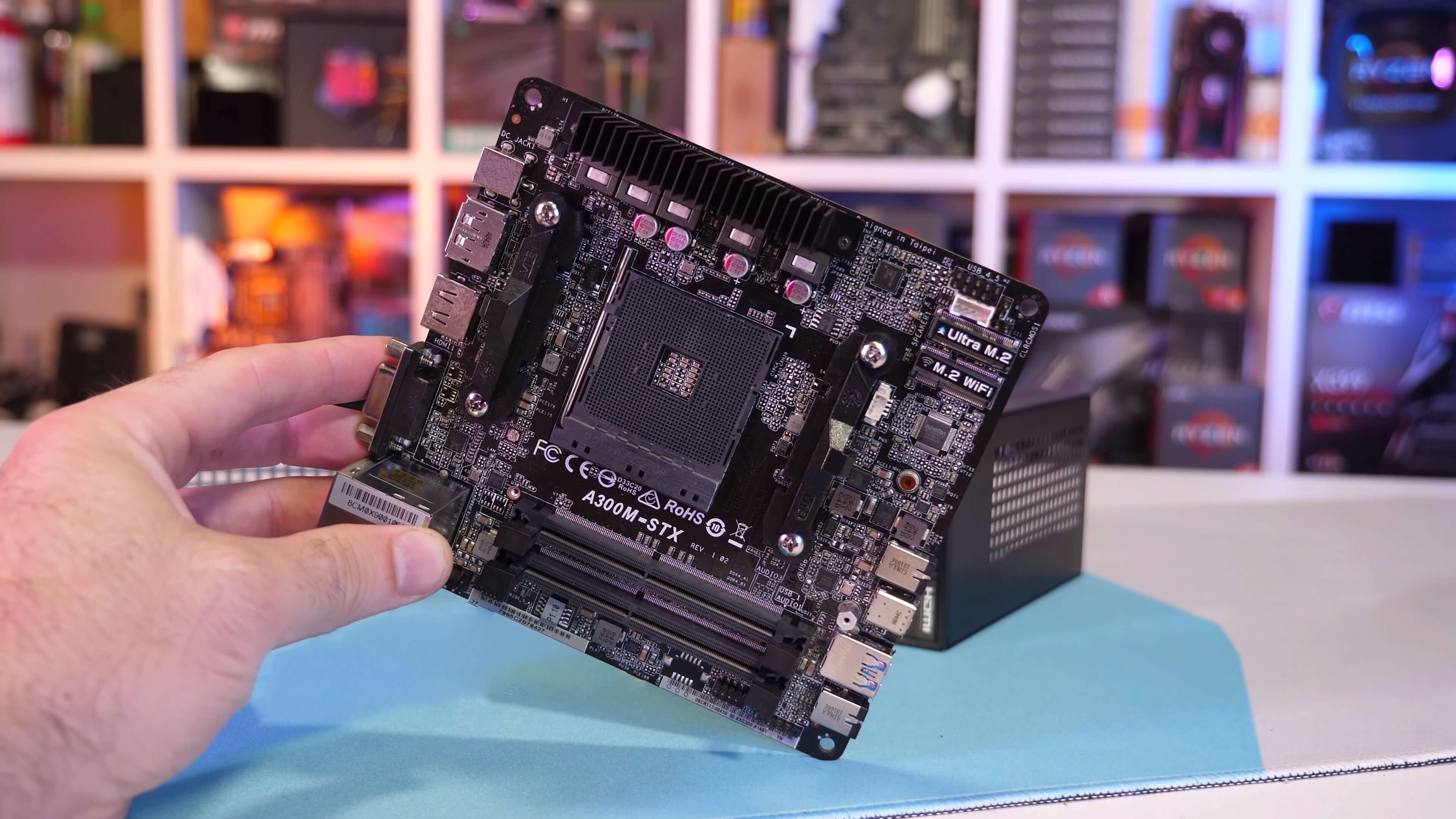The Asrock DeskMini A300 is a tiny PC that takes advantage of Ryzen processors. Almost every custom designed mini PC that we've seen to date has used Intel inside and while Intel CPUs are very good, they aren't the best choice for this kind of system. At least if you want to game or do any kind of 3D work, for that AMD's Ryzen APUs are unrivaled.
So after dozens of Intel-based Beeboxes and DeskMini PCs, Asrock has finally developed an AM4 socket system for Raven Ridge (and Bristol Ridge APUs). Ideally you want to throw in the Ryzen 3 2200G or Ryzen 5 2400G inside this system, our current top budget CPU picks that also happen to have more than decent integrated graphics capabilities.
With a recent price drop, for $135 the Ryzen 5 2400G is a cracking good processor and only those not in the know would buy the Core i3-8100 for $150 instead. We'll revisit the 2400G eventually at this price point as it brings SMT support, so twice as many threads than the 2200G for an extra $40. For now, we'll see how it performs in the new DeskMini A300, as this is the best APU you can pair with this compact 1.9L barebone.
The DeskMini A300 costs a very reasonable $150 and for that investment you get a custom case that measures 155mm wide, 155mm deep and 80mm tall. It's capable of housing two 2.5" storage devices and up to a 46mm tall CPU cooler. Inside you'll find Asrock's A300M-STX motherboard which measures just 140 x 147mm.
As you might expect for such a tiny motherboard it's not exactly brimming with features but you do get all the essentials. Front I/O includes a USB 3.1 Gen1 Type-C port along with a Type-A and around the back there's an additional two USB ports, a 3.1 Gen1 Type-A and a 2.0 Type-A. There's a basic Realtek audio and Gigabit network solution, three M.2 ports, two for an SSDs and a third for a Wi-Fi module and then two laptop-style memory DIMMs supporting up to DDR4-2933 with Ryzen APUs.
The display outputs include a single HDMI, DisplayPort and a legacy VGA port, and it's possible to use all three simultaneously for triple monitor configurations.
There are two optional items, one is a very basic air-cooler which came with our review unit and the other is an M.2 Wi-Fi kit, this didn't come with our sample. There is a listing over on Newegg which doesn't include the cooler but does come with the Intel AC-3168 Wi-Fi kit for $150, so that's a great option. After all, you can use the Wraith Stealth cooler that comes with your Ryzen APU, though be aware you'll have to remove the fan shroud, just the top cover with the AMD logo, this reduces the cooler's height by a few millimeters and has no impact on the cooling performance.
Powering the DeskMini A300 is an included 120w power brick, it's a 19v, 6.32A version and that's plenty of headroom for using something like the Ryzen 5 2400G.
That's the barebone. What you need to bring to the table is a CPU, we recommend either the 2200G or 2400G and then some kind of storage. I recommend something cheap such as the WD Blue 500GB which costs just $68 or if you can find the Plextor S2G 512GB at $55, either would work well for this build. You can fill the two 2.5" drive bays with larger mechanical hard drives or additional SSDs, your choice there.
We'll discuss more hardware configurations towards the end of the review, for now let's see what kind of gaming performance the DeskMini A300 paired with the Ryzen 5 2400G has to offer. We won't be delving into application performance as nothing has changed since our review of this CPU. Gaming performance, on the other hand, has seen improvements through updated drivers.
For testing we used G.Skill's Ripjaws DDR4-2133 CL15 16GB for a simple reason: it's cheap at just $80. G.Skill's DDR4-3200 memory costs upwards of $130 and while it will offer a nice performance gain when using the Vega 11 GPU, we can overclock the DDR4-2133 memory, and that's exactly what I did.
Setting the frequency to 2933 MHz reduced the timings to CL16-21-21-21-49. You could no doubt manually tune those timings for even better performance, but I wanted to test something that was closer to the out of the box experience.
Gaming Performance Impressions
Apex Legends
First up we have Apex Legends and here we were forced down to 720p with the lowest possible quality settings. At times the performance was deceiving as frame rates went above 100 fps but others they would dip to half that. Still overall we were looking at around 60-70 fps and performance was consistent for the most part. Bumping the resolution up to 900p was playable but the frame dips were far more noticable.
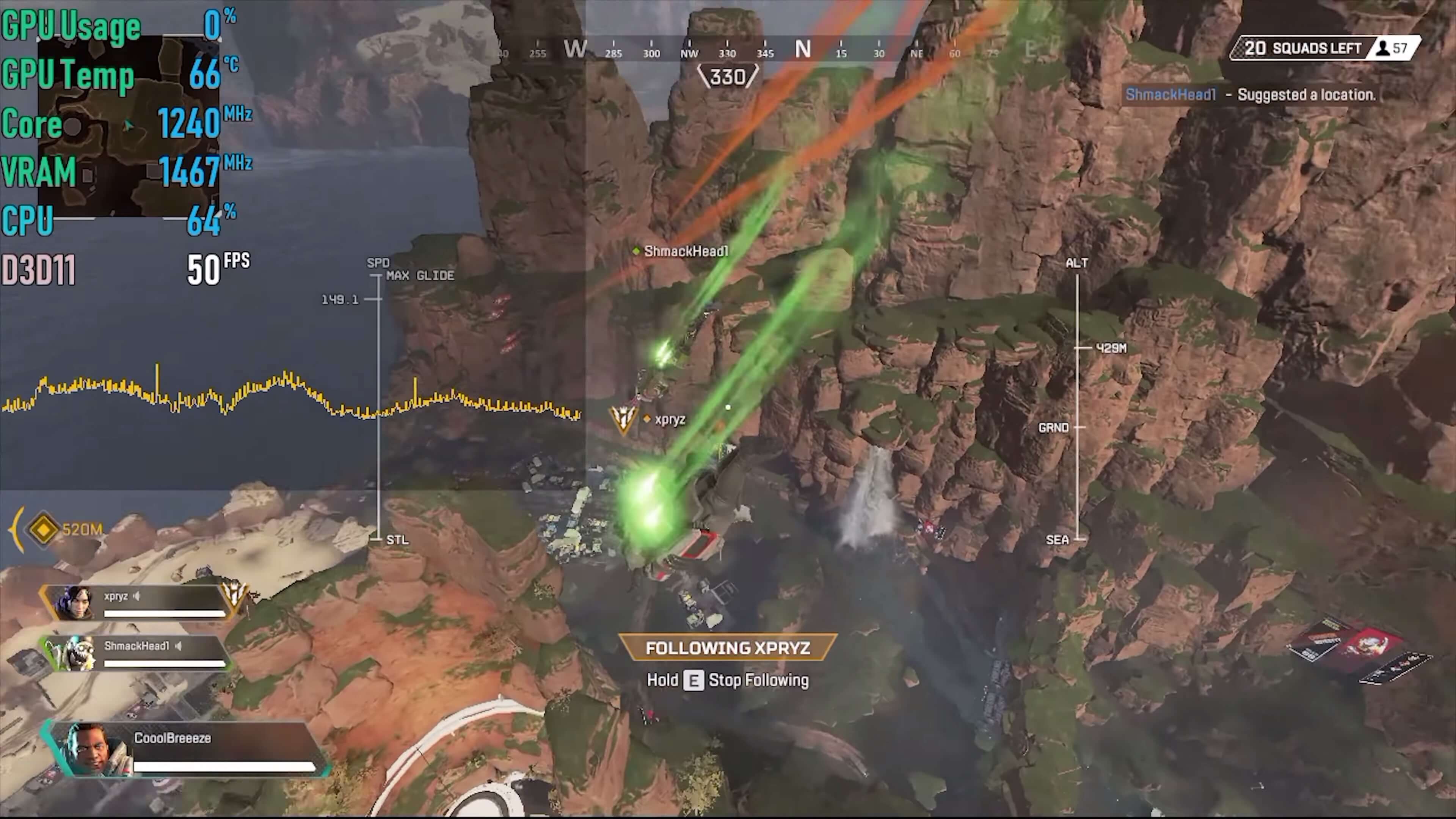
Battlefield V
Moving on we have Battlefield V and again we were forced down to 720p in search of 60 fps, and this kind of frame rate is required if you hope to rack up a few kills in the multiplayer modes. With the low quality preset enabled we typically saw around 60 fps with dips into the 50s, but overall a smooth and enjoyable experience, certainly playable by entry level PC standards.
CS:GO
When testing potato-like gaming performance you've always gotta include CS:GO and for this one we were able to test at 1080p using high quality visuals, though that's not saying much. Frame rates dipped into the 40s but were often up around 60 fps, needless to say with a few quality tweaks maintaining over 60 fps won't be an issue.
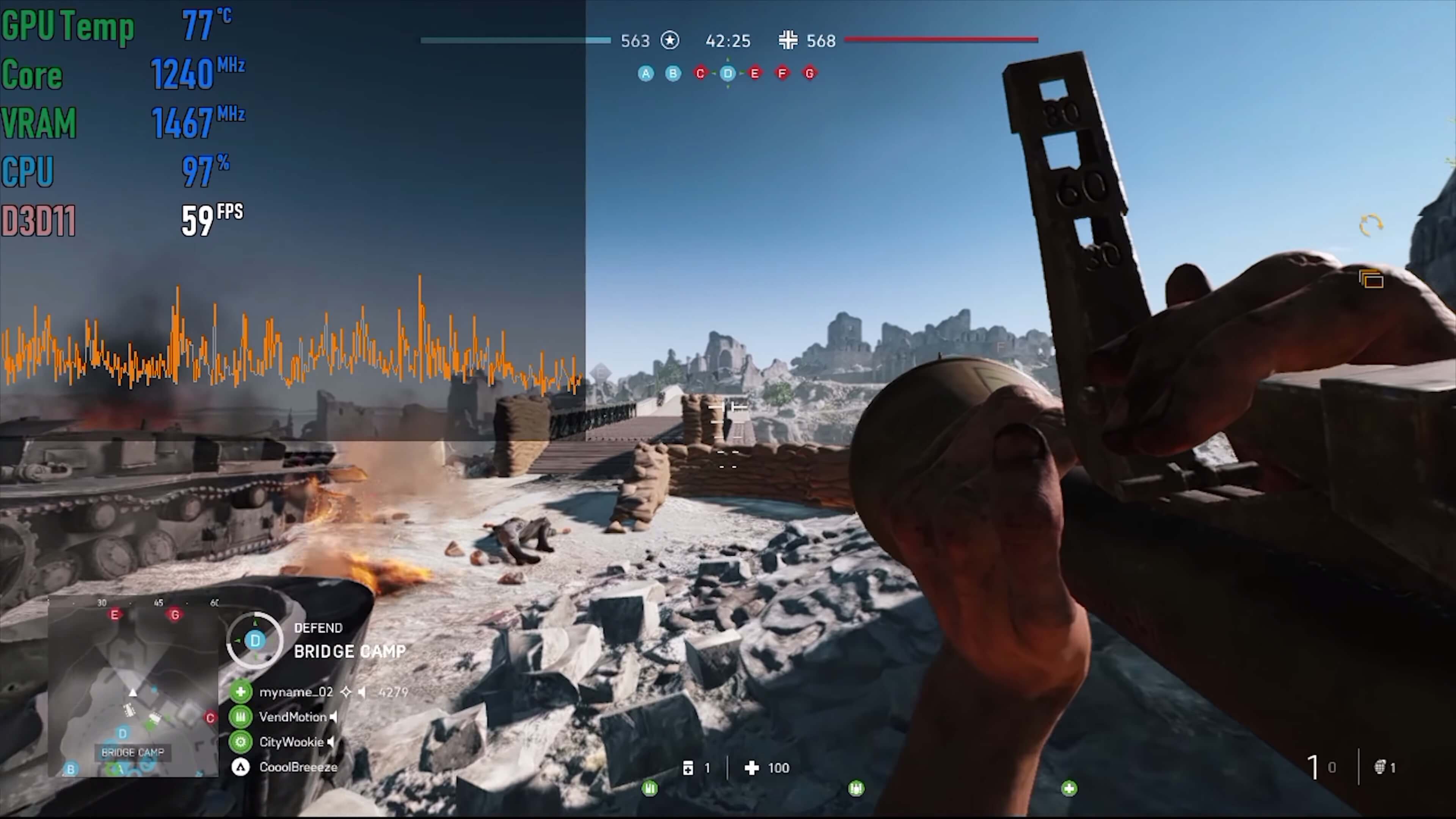
Far Cry New Dawn
Using the 'normal' quality preset at 720p frame rates fluctuated between 35 and 45 fps. There we're at times quite serious frame stutters but the game was still playable and I guess you've sort of got to expect that kind of thing when gaming with integrated graphics.
Fortnite
Next up we have Fortnite and for this one we went with the low quality settings at 900p and that allowed for at least 75 fps though most of the time we were looking more at 90-100 fps. Sadly though the experience was spoiled somewhat by fairly regular frame stuttering.
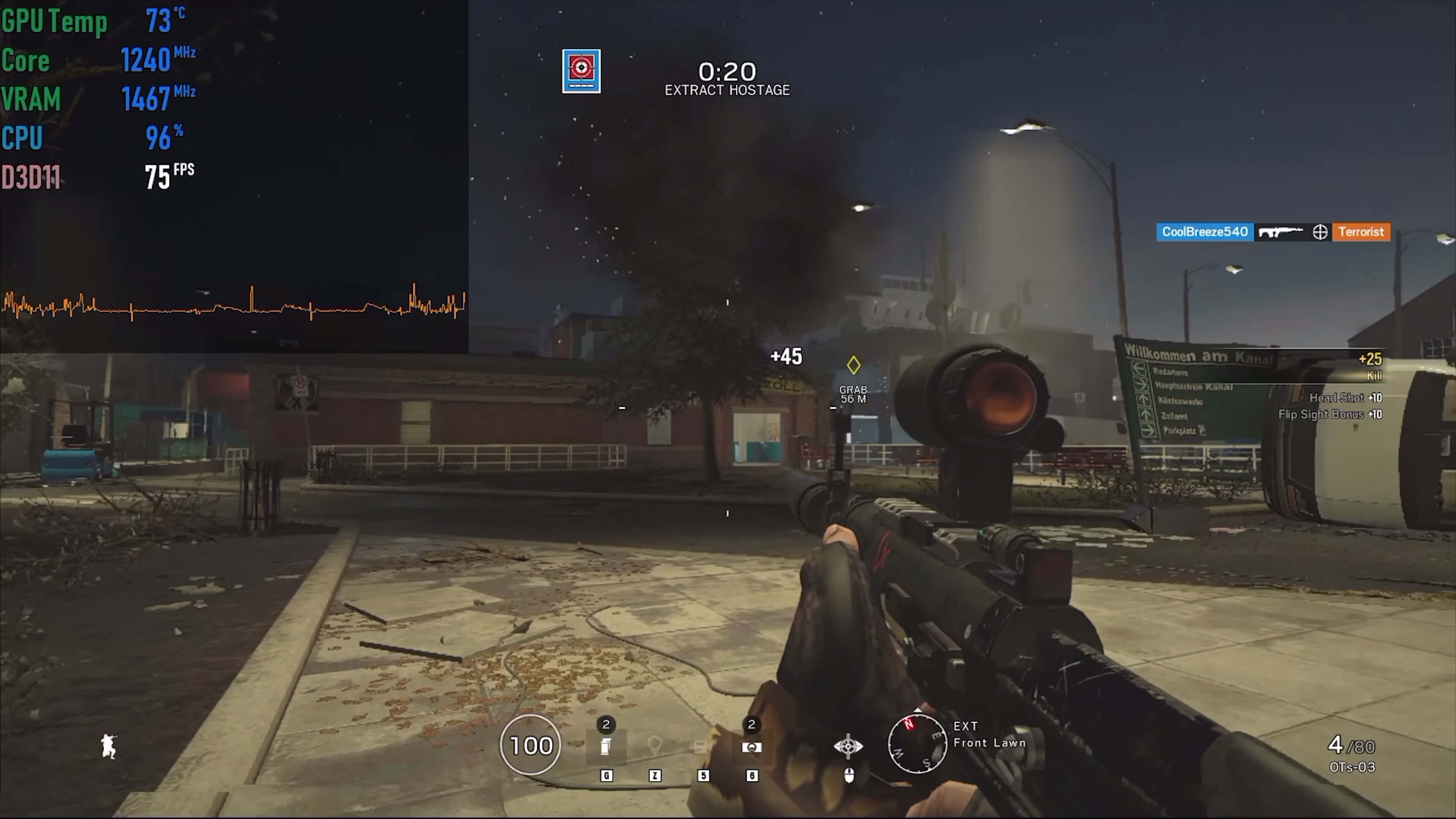
Rainbow Six Siege
One of the best experiences we had was with Rainbow Six Siege, using the lowest quality preset the resolution was set to 900p, though with TAA a 50% render scale is set. The game looked very good and played buttery smooth, I couldn't blame any missed short on frame stutters this time. Frame rates stayed above 60 fps at all times and generally hovered around 80fps, again it was a great experience and a perfect example of the fun that can be had with this compact system.
Rocket League
We fired up Rocket League and enabled the 'performance' preset at 1080p and this generally saw frame rates hovering between 70-80 fps allowing for smooth highly playable performance. As we saw with CS:GO it's possible to play these less demanding, but still highly popular titles, at very respectable quality settings.
Power & Temps
As mentioned earlier the DeskMini A300 comes with a 120w power supply which is fine for use with the Ryzen 5 2400G provided you don't go crazy with overclocking. Actually, you won't be able to overclock anyway as you'll be limited by thermals.
In its stock configuration using the 2400G with a pair of 1TB mechanical HDDs and a 2TB SSD, the DeskMini A300 consumed 82 watts in our Blender stress test and 102 watts when playing Battlefield V multiplayer. So there really isn't much headroom left for overclocking.
Looking at operating temperatures using the optional cooler the Ryzen 5 2400G hit 78 degrees under load in our Blender stress test, but idled at just 33 degrees. This is a reasonable operating temperature and surprisingly this little cooler didn't make much noise. Replacing the base cooler with the Wraith Stealth only dropped the load temperature by 4 degrees, though the DeskMini A300 was basically silent now. So if you have a Stealth cooler and you're happy to take off the top cover then I recommend using it in the A300.
Closing Remarks
Asrock's new DeskMini A300 is everything we hoped it would be and we're glad they finally released a mini PC that supports Raven Ridge APUs. The gaming performance won't blow your socks off, but you can at least play in some capacity, this simply wasn't possible beyond flash-based games on previously seen Intel models.
If you're after a compact gaming rig and you don't want to buy a console for gaming, a fully functioning PC like the DeskMini A300 can fit the bill nicely. We do recognize this is a very niche product, you have to be in the market for an extremely small PC that can handle some light 3D work.
If you're simply after a cost-effective gaming rig then this isn't it. Even though the barebones is priced modestly, the A300's inability to support a discrete graphics card makes your only upgrade option here a Zen 2-based APU.
Budget Build Options
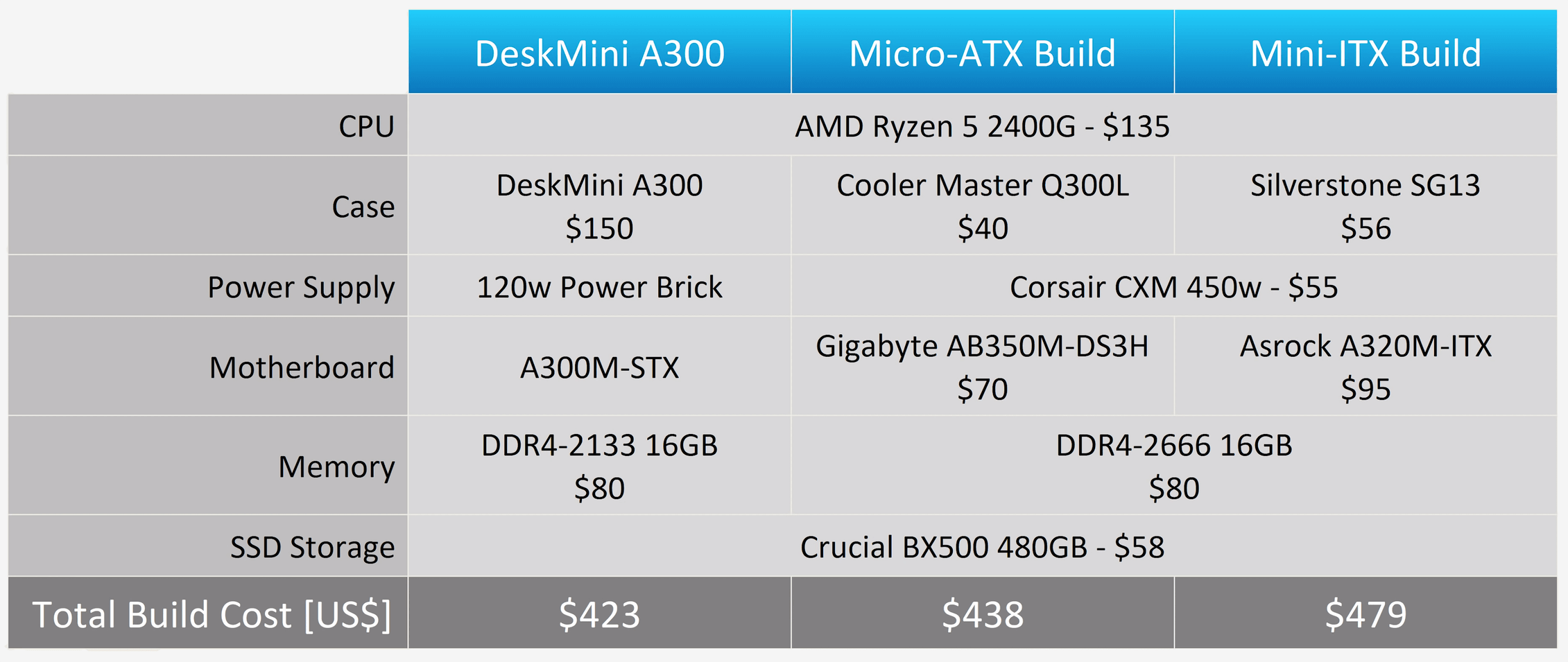
Alternatively you could build your own Ryzen 5 2400G system in a larger MicroATX case for a few dollars more and this gives you the ability to snap up something like a Radeon RX 560 or perhaps even one of those insanely cheap RX 570 models and this $100-150 discrete graphics card upgrade will improve gaming performance tenfold.
Or for a slight price premium it's also possible to build a Mini-ITX system, again with the ability to support discrete graphics cards. But in the end, if you seek a super compact Mini PC then we feel there is no better option right now than the DeskMini A300.
